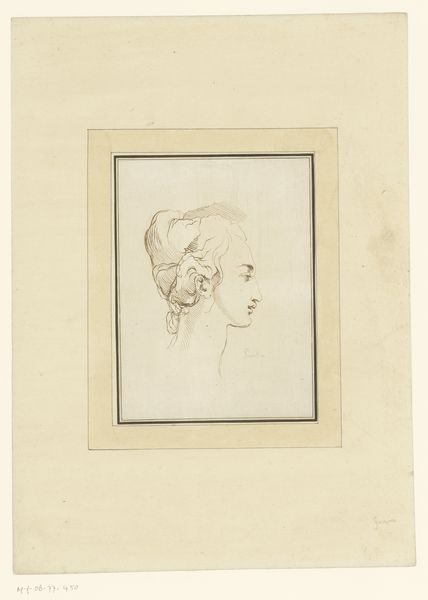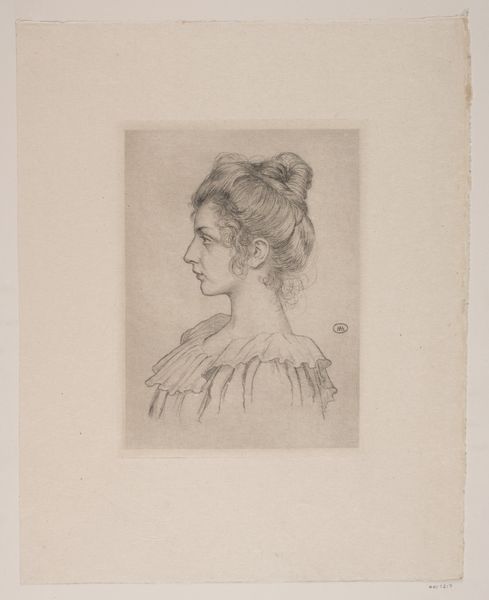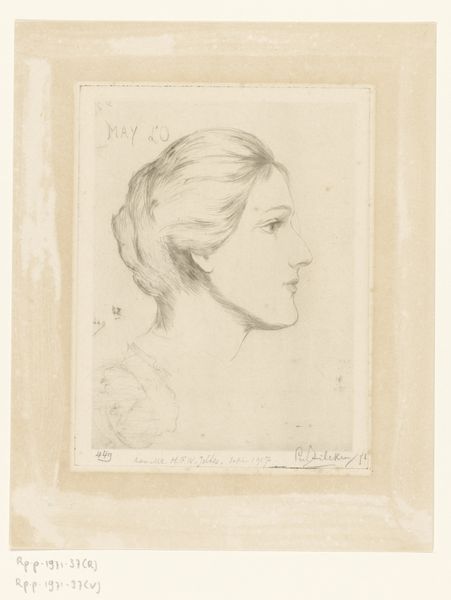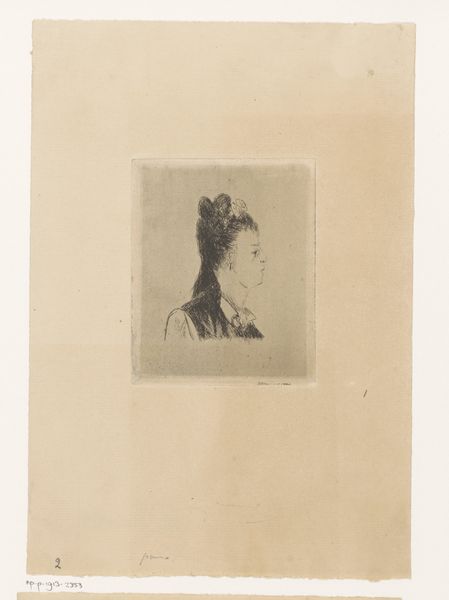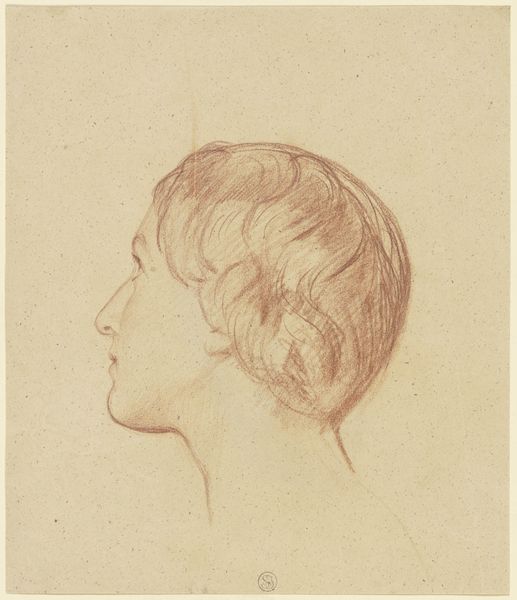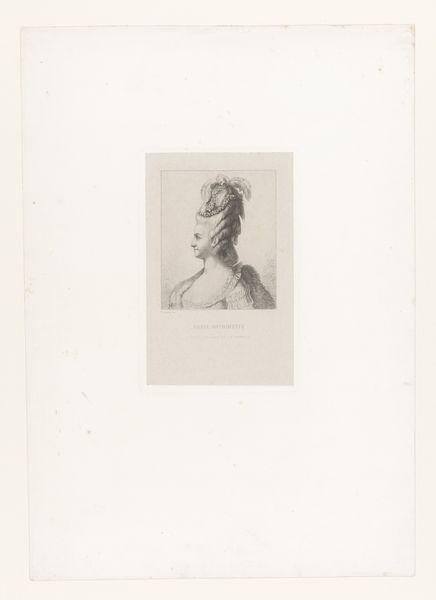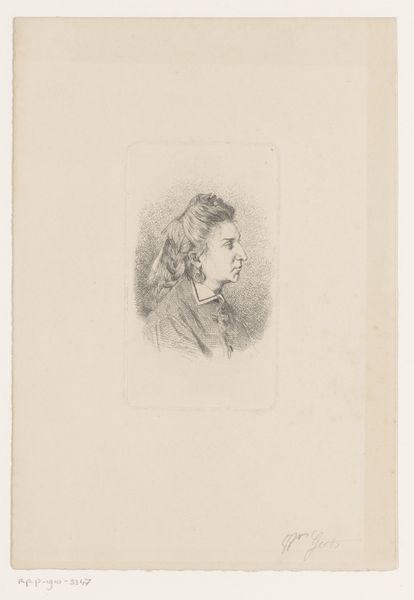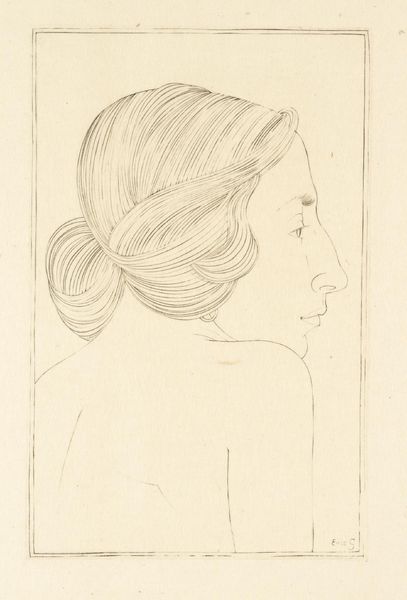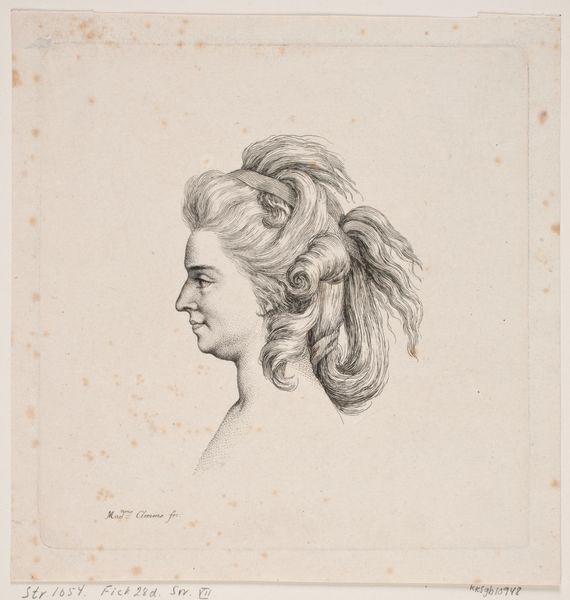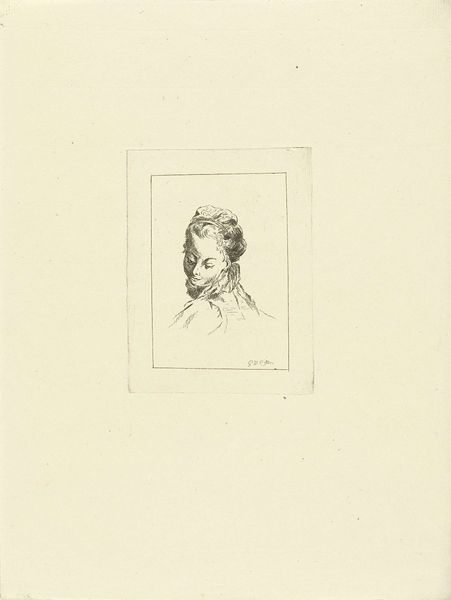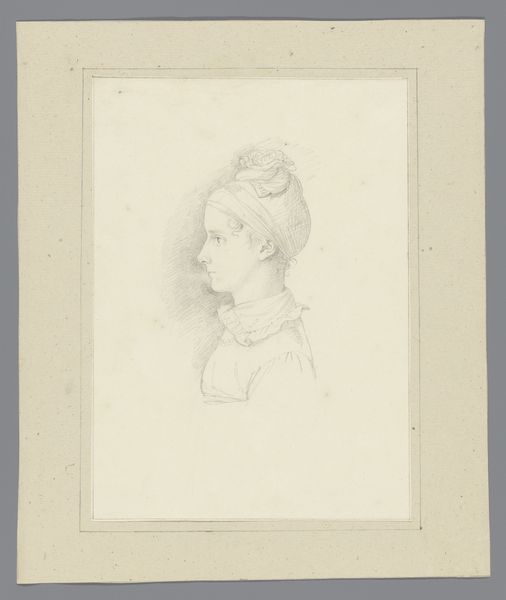
drawing, print, etching, pencil
#
pencil drawn
#
drawing
# print
#
etching
#
pencil sketch
#
pencil drawing
#
pencil
#
pencil work
#
academic-art
#
profile
Dimensions: 148 mm (height) x 117 mm (width) (Plademål)
Editor: This is "Kvindehoved. Profil til højre," or "Female Head. Profile to the Right," an etching and pencil drawing by Axel Hou, created in 1898. There's a delicate, almost dreamlike quality to it; she seems like a figure from a myth. What do you see in this piece? Curator: Beyond its aesthetic appeal, I'm struck by how it encapsulates a shift in societal representation. Profile portraits, particularly of women, were historically potent signifiers of status and ideals of beauty. But by 1898, you see a movement towards a more intimate and perhaps psychologically probing portrayal. Notice anything distinct about her gaze, or lack thereof? Editor: She's not looking at us. She's looking away, at something we can't see. Curator: Exactly. The averted gaze speaks volumes. It rejects the tradition of women as objects of observation, implying inner thought and perhaps a certain degree of independence. What might this conscious choice of visual language suggest about the cultural climate at the time? Editor: That women were demanding to be seen as more than just pretty faces? That they had inner lives and thoughts that mattered? Curator: Precisely! The symbol of the averted gaze evolves. Also, consider the choice of pencil and etching. These mediums create soft lines, lacking the boldness associated with conventional, public-facing art, creating vulnerability and inviting empathy. Do you agree? Editor: Yes, the sketch-like quality makes it feel unfinished and intimate, as though we’re catching a glimpse of a private moment. It really humanizes her. Curator: It reflects changing attitudes regarding personhood. An unfinished, “intimate” depiction could mirror evolving roles and self-perceptions among women as a whole. Editor: I never considered that this pose would mean anything at all! It is an insightful artwork.
Comments
No comments
Be the first to comment and join the conversation on the ultimate creative platform.
